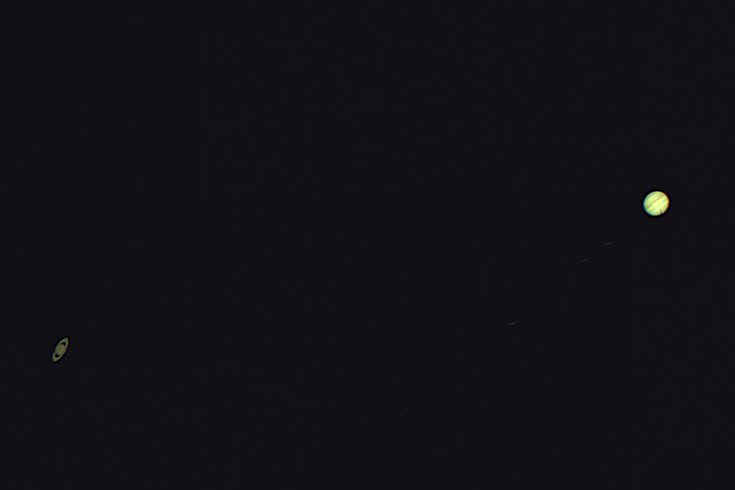
December 21, 2020
 Raman Madhira/Raysastrophotograhy/Creative Commons
Raman Madhira/Raysastrophotograhy/Creative Commons
The Great conjunction, seen above, was observed here on December 19, 2020, two nights before the alignment of Jupiter and Saturn on December 21. This image was recorded by Raman Madhira from Ray's Astrophotography Observatory using A 14-inch Schmidt Cassegrain Telescope and a color charge-coupled device.
Stargazers in the Northeast U.S. won't get much from help from the weather if they're hoping to see the rare "great conjunction" of Jupiter and Saturn on Monday night.
The much-hyped celestial event, set to occur for the first time in nearly 800 years, will bring the two gas giants into an extraordinary alignment that forms what appears as a "double planet," a single bright point of light in the sky.
Astronomers said the planets' orbital alignment will continue until Christmas night, but the ideal time to view it is on Monday, Dec. 21, the winter solstice and longest night of the year.
Viewing the great conjunction was already going to be a challenge for those who live far from the equator, where observation is best. The alignment is most visible in the southwest sky about an hour after sunset, but cloudy conditions in the Northeast on Monday will make witnessing the planets a longshot.
Even with a small telescope or binoculars, astronomers had already said the planets will be so closely aligned that it's difficult to distinguish them. The two planets will pass with 0.1 degrees of one another, at a distance of about one-fifth of a full moon's diameter.
To help the public observe the event, the Lowell Observatory in Arizona and the Carnegie Science Observatory in California will each have virtual streams available Monday night.
The Lowell Observatory's stream will begin at 7 p.m. Eastern Standard Time.
The Carnegie Science Observatory's event starts at 8 p.m. Eastern Standard Time. They will also hold a Zoom party for the event, requesting those who join register in advance.
The great conjuction has happened only twice in the past 2,000 years. It is expected to occur again in 2080, when astronomers believe it may be easier to view because it will be visible higher above the horizon. After that, the event won't occur until 2400.